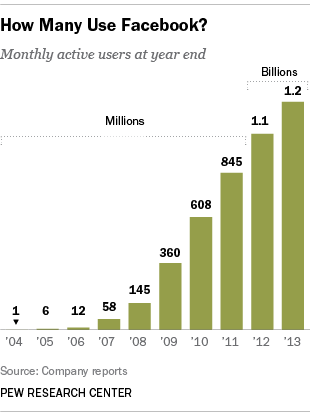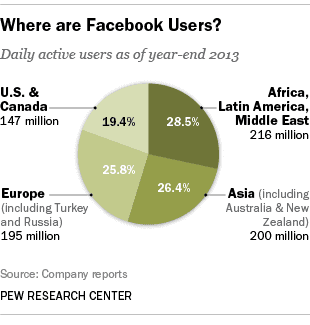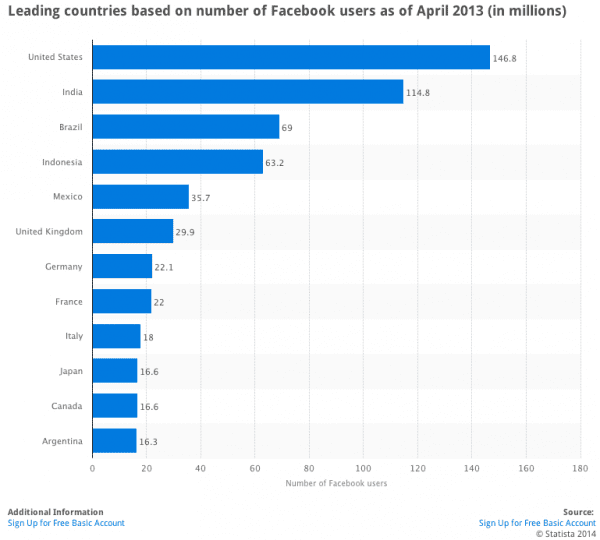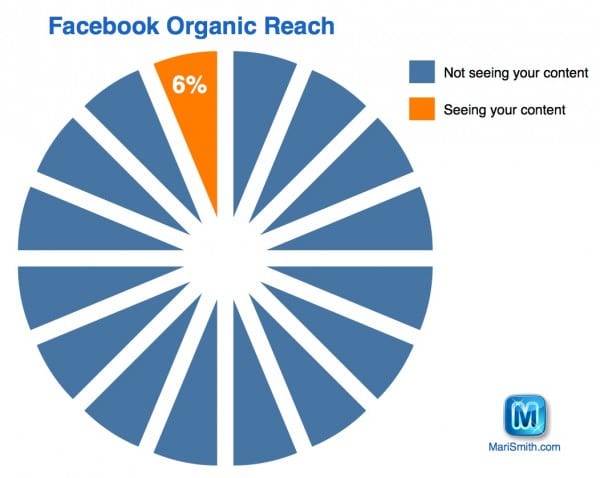Why and how marketers must respond to the decline in organic reach

There are many articles talking about the demise of Facebook, articles like this on Forbes discussing the decline of organic rearch. Other research suggests growth in users is strong, albeit from new markets. At the same time, Facebook is demanding that we now ‘pay to play’, no more organic reach - at least not reliably for those cheap contests and product-led posts brands seem to love so much - this is resulting in fellow whining marketers like these guys bemoaning the gifted “free” ride that we’ve had for the last free years. But hasn’t it always been this way, haven’t we had to evolve with this change from Google too as they led the search engine charge that marketers were so keen to follow, a case of déjà vu?
Remember how relatively easy SEO and paid search used to be up to around 2007–2008, I whined when that got expensive too. By the time Panda and Penguin came along, smart marketers had moved on trying to beat Google with tricks. It became obvious that focussing on producing the best possible experience for their fans and potential customers would win, quality just does. Quality was also cheaper to advertise.
So why did so many marketers resort to similar low quality, dodgy tactics when social media marketing came along?
Face the music. We’ve built valuable brand outposts on rented land - again - and now the new landlords want us to contribute to the running of the land we squat on. What’s with the wounded sense of entitlement that we have?
‘Pay to Play’, and pay a lot less if your content is great
 The “free” (it never quite was anyway) ride for brands on Facebook is coming to an end, and Facebook should now be moved into the ‘paid channel’ in the marketing budget. The end game here is that a message posted on a brand page will not be shown to anyone unless it gathers a notable number of likes from a user’s friends.
The “free” (it never quite was anyway) ride for brands on Facebook is coming to an end, and Facebook should now be moved into the ‘paid channel’ in the marketing budget. The end game here is that a message posted on a brand page will not be shown to anyone unless it gathers a notable number of likes from a user’s friends.
If their friends like a post, if there is a visible adoption of the post by the community, only then the post has earned the right to be shown organically. The quality of Facebook’s users’ news feeds is what keeps them in business. That’s why, like Google, they’re growing their algorithm, with over 100,000 weight indicators being considered at any given time.
The consequence of our actions
We drove the change and the new cost, the brands, spending cash to reach an audience that someone else invested many millions to create value for in the first place, the need for change is driven by their need to see return and more-over avoid frightening off the very user base that they built, the very target audience that we seek to connect with. If you wanted evidence of how polluted user’s news feeds are becoming then test liking everything that you see, as per this comical article. What do we expect?
We need the ever powerful Facebook
Facebook, like everything else in digital media - is constantly changing. And for the last 10 years that’s all digital media channels have ever done - evolve - with the consumer and the market-place, powered by new, cheaper, more accessible technology, and the consumer’s thirst to use it and connect. All organisations have to make money, including us, it’s the way of the world.

Despite the evolution Facebook still enjoys prolific market penetration (around half of the population of the USA and the UK, for example, where else can you target that with such accuracy?). Truth is with 1.28Bn users, that’s 15% more than a year ago, and 1Bn active mobile users checking Facebook their smartphones 14 times per day - there is nothing like Facebook, and there never has been. And, despite massive growth in volume from overseas markets - still, the most active users remain in the USA with one in five of all page views occurring on Facebook.
A powerful, changing ecosystem
With WhatsApp, Instagram and Facebook the eco-system run by the social media giant is prolific.
Facebook acquisitions amount to $22Bn, the GDP of Uganda, and like Google, we can only speculate as to what’s next after their recent acquisition of virtual reality start-up, Oculus Rift.
Stop whining - the most important thing hasn’t changed at all
As Facebook (and Google) own the foreseeable future platforms for marketing, digital or otherwise, we - worst case - simply have more relevant places to invest ad spend. Brands who already splurge vast amounts of cash for fun in advertising, six figures for a one page ad to “drive awareness”, they have done for many decades with little sense of ROI and indirect correlation at best. They now have reliable, laser-targeted opportunities to be seen. Facebook will even make it cheaper for brands, enabling greater organic reach for content that its’ users want to see. Evidenced through Likes, Comments and Shares, brands simply have to be worth finding. The strongest, the committed and the genuine will win.
So, it’s the same old strategy, with a new twist
It’s time to ‘Pay to Play’ by working the same strategy in a new way:
- Deliver engaging content to the right audience at the right time. Brands will have to pay for smart people to produce engaging content on their behalf.
- Amplify that engaging content with measured and strategic ad spend in Facebook.
Of course, this strategy will work just as well in other key social media channels. Go figure.
“Marketing today… The act of finding a truth and telling it,” Marc Mathieu, SVP of marketing, Unilever
Quality content matters more than ever - this is actually the insight. In this Adobe report the engagement rates on Facebook for links, text, and video posts all saw a decline from the year prior. Tamara Gaffney, principal analyst for the Adobe Digital Index, states “It’s not because the audience on Facebook doesn’t like video [or content] anymore. We believe the creative treatment posted to Facebook was not as high quality.”
The cause of decline in organic Facebook reach
It’s the same as happened in Google, as Facebook expert Mari Smith highlights here - only 6% are seeing your content and this is expcted to fall to 1–2%, possibly 0%.

With the average user having 338 friends, the volume of noise, of branded content and friend content, means that ultimately, out of the 1,500 – 15,000 potential stories, Facebook must process them through their algorithm and display approximately 300 stories in your feed. That quality has to be protected.
“The simplest answer [for the decline in organic reach] is there is a significantly greater amount of potential content flooding into our news feeds on a daily basis” Mari Smith
As long as Facebook continue to invest and use all the data gathered about those users to help them see the content that they and their connections find the most engaging, brands must continue to try delivering content that matches their expectations. It is that simple.
Even though social media marketing is now also about spending strategically, it was always about delivering engaging content to the right people at the right time.
12 practical Facebook reach tips from Mari Smith
- Post more often - at least three times a day.
- Experiment with posting at different times of the day, including outside business hours.
- Post a mix of your own content (short tips + links to your longer blog posts) + other people’s content that you curate from a variety of sources
- Post directly on your Page and also share posts from other relevant Pages.
- Include @ tags of related Pages in your posts. This may help create more visibility in the news feed of the fans who have liked the tagged pages.
- Repost your own evergreen content.
- Mix up the post types: status updates, links, photos, videos, offers, events, milestones and cover image changes.
- Test post length from super short (<120 characters) to much longer (63k is the max!).
- Check your Insights for when your fans are online and be sure to post during these times (as well as outside, per tip #2).
- Come up with a theme for each day of the week and publish posts pertaining to that day’s theme. Also, look for ways to crowd source content and featured input from your fans.
- Compare your reach performance against the average at: http://barometer.agorapulse.com/
- And, of course PAY for more reach on posts that impact your bottom-line, using the Boost post option or go into your Ads Manager/Power Editor.
There are more specific examples of how to review and increase Facebook organic reach in this post from Marie Page.
Oh one final thought for the whining marketers. A s**t post that your brand now pays for, always was and still is, s**t. Hopefully you’re motivated to stop and think.




 The “free” (it never quite was anyway) ride for brands on Facebook is coming to an end, and Facebook should now be moved into the ‘paid channel’ in the marketing budget. The end game here is that a message posted on a brand page will not be shown to anyone unless it gathers a notable number of likes from a user’s friends.
The “free” (it never quite was anyway) ride for brands on Facebook is coming to an end, and Facebook should now be moved into the ‘paid channel’ in the marketing budget. The end game here is that a message posted on a brand page will not be shown to anyone unless it gathers a notable number of likes from a user’s friends.




